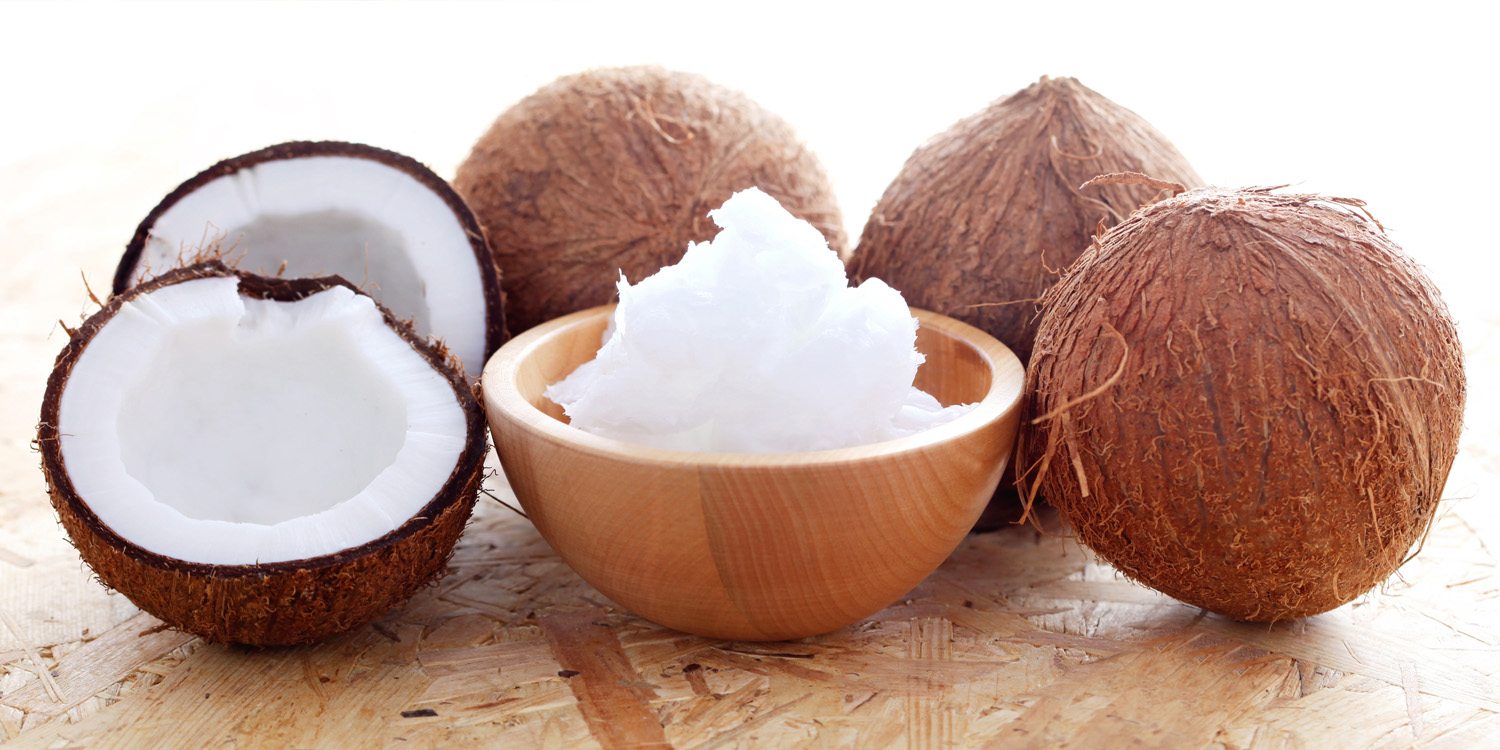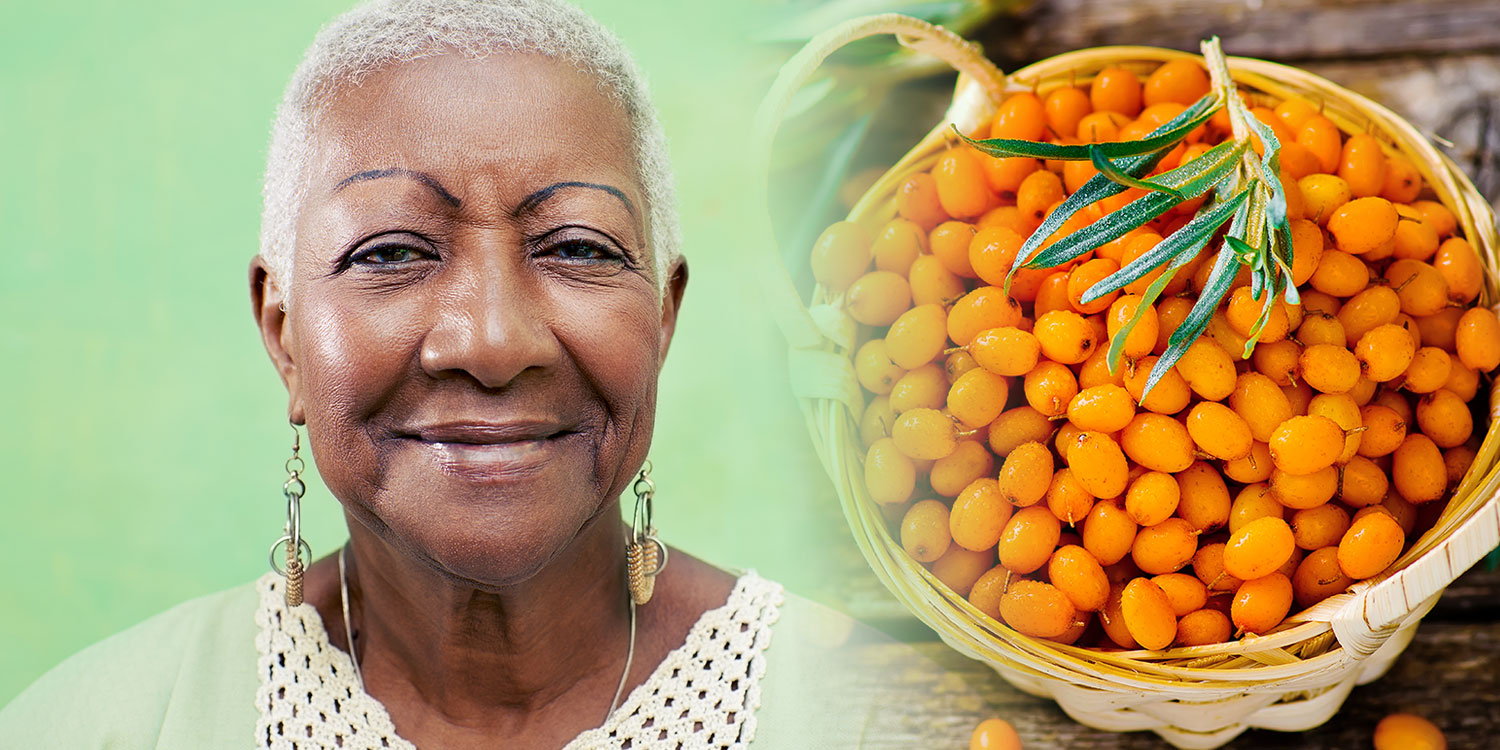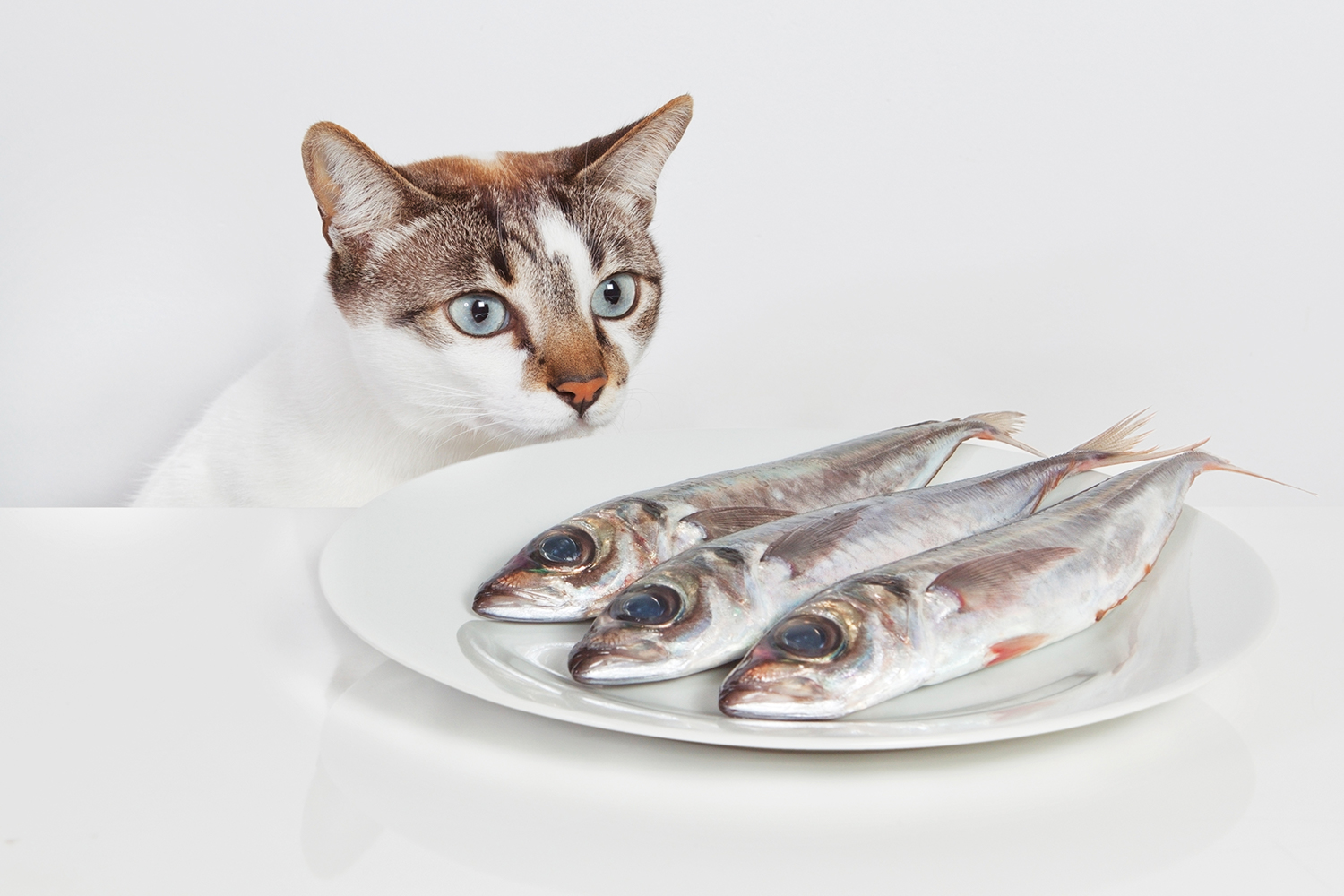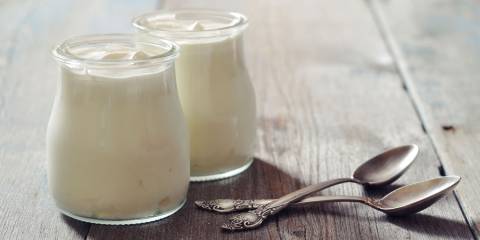-
Olive Oil
A healthy dietary fat, olive oil is rich in monounsaturated fats and antioxidants. An analysis of cancer studies over the last 11 years found that high intake of olive oil correlated to lower odds of developing any type of cancer—including breast cancer.
-
Omega 3s
Essential fatty acids, omega 3s are found in oily fish such as mackerel, sardines, albacore tuna, and salmon as well as in supplement form. Research indicates that women who eat foods rich in omega-3 fatty acids may be less likely to develop breast cancer.
-
Fiber
If you’re eating your fruits and vegetables, you’ve got a good start on a high-fiber diet. Now add whole grains to boost your intake. The effect could be significant: A team of nutritionists in China gathered research from 10 earlier studies on women’s diets and cancer risk and found that women who consumed the most dietary fiber were 11 percent less likely to develop breast cancer than those who ate the least.
The same review determined that every 10-gram-per-day increase in dietary fiber intake was associated with a 7 percent reduction in breast cancer risk.
Foods that Protect Against Breast Cancer

“Dietary Fiber Intake and Risk of Breast Cancer: A Meta-analysis of Prospective Cohort Studies” by Jia-Yi Dong et al., Am Journal Clin Nutr, 6/15/11
“Olive Oil Intake Is Inversely Related to Cancer Prevalence” by T. Psaltopoulou et al., Lipids Health Dis, 07/30/11
You might also like...
Oil Pulling May Improve Oral Health
Coconut oil can reduce bacteria in the mouth

Swapping coconut or sesame oil for your mouthwash may be one way to naturalize your beauty regimen and improve your oral health.
What Is Oil Pulling?
Oil “pulling” is the practice of swishing oil around the mouth. It can be done using coconut oil, sunflower oil, or sesame oil.
What Is Oil Pulling Good For?
It's said to not only whiten teeth and keep gums healthy, but to brighten complexions. Some even say it can ease asthma and migraine symptoms.
It's also been used to prevent decay, oral malodor, bleeding gums, dryness of throat, cracked lips and for strengthening teeth, gums and the jaw. A meta-analysis of nine randomized controlled trials showed that salivary bacterial counts are significantly reduced in the oil-pulling groups as compared to control groups.
The therapy has been shown to be very effective against plaque-induced gingivitis both in the clinical and microbiological assessment, according to a study.
What Is The History of Oil Pulling?
Oil pulling is a traditional Indian folk remedy, according to an article in the Journal for Ayurvedic and Integrative Medicine.
It is mentioned in the Avurvedic text Charaka Samhita, where it is called “Kavala” or "Gandusha" and is claimed to cure about 30 systemic diseases ranging from headaches to diabetes to asthma.
The role of Ayurveda is the management of oral health has been a subject of many studies.
How Does Ayurvedic Oil Pulling Work?
Swishing or gargling with the oil “pulls” the benefits of the oil into the mouth and gums, where they are then absorbed into the bloodstream.
"The effect of oil pulling with coconut oil to improve dental hygiene and oral health: A systematic review" by J. Woolley et al., Heliyon, 8/27/20
"Effectiveness of oil pulling for improving oral health: A meta-analysis" by T.-R. Peng et al., Healthcare (Basel), 10/11/22
“Tooth brushing, oil pulling and tissue regeneration: A review of holistic approaches to oral health” by Abhinav Singh and Bharathi Purohit, Journal of Ayurveda and Integrative Medicine
You might also like...
The Coconut Cure

From a metabolic perspective, coconut can do no wrong. It feeds the thyroid and is the only source of saturated fat that does not require bile to break it down for your body to use it. Coconut oil actually bypasses the gallbladder. This is great news for anyone with a gallbladder condition or fatty liver.
It is a rich source of medium chain triglycerides (MCTs) that can improve the efficiency of your thyroid and boost metabolism over 50 percent. The beneficial fatty acids in coconut oil are fast burners that create a most efficient food fuel not only for your thyroid but also for your brain, where it can aid cognitive function. In fact, the MCTs produce ketones, substances your body produces when it breaks down fats for energy, which can play a major role in treating Alzheimer’s and other neurodegenerative diseases.
Burn Belly Fat with Coconut Oil
At least two studies document the effectiveness of coconut oil on belly fat burn for both sexes. In one, participants received a daily dose of two tablespoons of coconut oil for a period of 12 weeks. At the end of the study, both men and women evidenced a reduction in waist circumference while the women also saw their HDL (good) cholesterol levels rise.
This newly revived ancient oil, which has become wildly popular, has very few drawbacks. It does seem, however, to work best for those who have an A blood type due to the presence of dietary lectins (protein-based antigens) in other blood types. When it is not tolerated well, it may be due to this type of allergic response as lectins can disrupt digestion, impair immunity, and create agglutination of blood cells.
Still and all, coconut oil has been proven to be not only safe but also extremely effective at targeting abdominal fat in both men and women. Just the addition of two or more tablespoons of this delicious smart fat to your diet can reduce your belly fat and elevate your good cholesterol levels.
As a rich source of lauric and caprylic acids, coconut functions as a marvelous antiviral, antifungal, and antiparasitic food.
Excerpted with permission from Eat Fat Lose Weight by Ann Louise Gittleman, PhD, CNS ($17.95, McGraw-Hill Companies, 2001)
Ann Louise Gittleman, Ph.D., C.N.S.
Ann Louise Gittleman, PhD, is a New York Times award-winning author of 30 books on detox, health, and healing, including the international bestselling Fat Flush Plan and Zapped! Visit her blog and join her online Fat Flush Community.
Is Beauty Skin Deep?

The concept of beauty is a paradox that I have not completely figured out. Unrealistic ideals of beauty have hurt women even as they sold untold billions of dollars in cosmetics and facials and lotions and potions. Yet I, too, use these lotions and potions because I think they make my appearance more appealing, and that gives me pleasure. I like pleasure. I suppose I am not angry about wanting to look better—I think that is human nature—but I am angry about the commercial manipulation of those desires.
So I am careful when I talk about beauty. In my opinion, the best kind of beauty is a natural reflection on the features we associate with health—clear eyes, radiant skin, shining hair. Age or size doesn’t matter as much as whether a person is happy, rested, and healthy.
However, as we age, changes occur to our skin that can make it feel dull and dry. Sometimes this is because of environmental exposure, poor nutrition, certain medications, or genetics—regardless, it can certainly take a visible toll. Some health conditions can also be problematic, or even cause accelerated skin aging. Also, we can start to experience mucosal dryness that takes away the sparkle in our eyes.
One of the best nutrient interventions for restoring skin luminosity, reducing eye dryness, and improving moisture in all our mucous membranes is sea buckthorn seed and oil extract.
Sea buckthorn (Hippophae rhamnoides) is a thorny bush that grows in northern climates, producing an orange berry that is full of rare and beneficial compounds, the most important of which is the omega 7 fatty acid.
You have heard of the importance of omega 3 fatty acids (primarily EPA and DHA) from fish for skin health, but omega 7 may be new to you. There are not many omega 7-rich botanicals in the world, but another good source is one of my favorites—macadamia nuts.
One important function for omega fatty acids is that they are incorporated into the cell membrane, where they each bring their unique characteristics into play. Omega 6s and 9s are stiff, tightly stacked, and solid. Omega 3s are resilient and flexible, resulting in cell membranes that are also more resilient and flexible. Omega 7s are extremely good at holding on to moisture. This means they are very effective for dry skin, fine lines, dull complexion, and dry, irritated eyes.
In a published study, 30 women between the ages of 50 and 70 took a proprietary blend of sea buckthorn seed and pulp oil (SBA24) capsules, four capsules per day, for three months. There was a significant improvement in skin hydration status and overall skin elasticity. Use of the capsules also resulted in decreases in the measures of mean roughness and maximum roughness of the skin surface, indicating the anti-wrinkle benefits of the oral sea buckthorn blend.
If you choose to use sea buckthorn, there are a few points to remember. Make sure it is hand harvested, because machine harvesting ruptures the berry and causes oxidation of the nutrients, rendering them less effective. It should be a blend of both sea buckthorn seed oil and sea buckthorn pulp oil. Each extract yields different nutrients, so the best supplements are blends of both.
As with all supplements, look for products that have been used in published clinical studies. Sea buckthorn is a worthwhile investment in your skin health, today and in the years to come, but you will derive few benefits from low quality oils.
Cheryl Myers
Cheryl Myers, RN, is an integrative health nurse, author, and expert on natural medicine. She is a nationally recognized speaker who has been interviewed by the New York Times, Wall Street Journal and Prevention magazine. Her articles have been published in Aesthetic Surgery Journal and Nutrition in Complementary Care, and her research on botanicals has been presented at the American College of Obstetrics and Gynecology and the North American Menopause Society. Follow Cheryl on Facebook!
Swim into Slim with these Omegas

File ID 5009822 | © Monkey Business Images | Dreamstime.com
When it comes to hunger and tummy fat, your hormones are key.
Similar to how the thyroid hormone controls metabolism and insulin is driven by excess carbohydrates, hunger and stress hormones affect your appetite and belly.
By resetting hormones, you will increase insulin sensitivity, stabilize blood sugar levels, reduce that fight or flight urge, and preserve more lean muscle mass while you fast track your weight loss.
Love that Leptin
Leptin is a long-term chemical messenger for your appetite. If you never feel quite satisfied after a meal, then your leptin is too low. High leptin levels are the ticket to speedy slimming and when this hormone is signaling correctly, it should decrease your appetite.
As a key appetite hormone, it would stand to reason that levels of leptin should be lower when you’re thin and higher when you’re overweight. So, you would think that overweight people would have less of an appetite, but this isn’t how it seems to work. People who are overweight and have high leptin levels somehow don’t get the signal to stop eating and stop storing fat. They develop a condition called leptin resistance, which is similar to insulin resistance, where the body is no longer sensitive to the appetite-decreasing effects of leptin.
Both leptin and insulin resistance are triggered by an excess of refined carbs, sugar—especially fructose (fruit sugar)—and not enough exercise or sleep and too much stress. Leptin resistance, however, is especially frustrating when it comes to long-lasting fat loss because it has a habit of actually increasing the level of visceral fat—the fat that is deep within the abdomen.
Leptin is balanced primarily by omega-3 fats, like fatty fish and fish oils. From a dietary standpoint, the essential fats from the omega-3 rich fish (salmon, sardines, anchovies, and mackerel) as well as EPA- and DHA-rich fish oil can stabilize leptin levels by helping to balance brain chemistry.
Since more than 60 percent of the brain is made from fat (primarily the ones that cannot be synthesized by the body, but must be eaten in the form of foods), I would say that these omega 3s are pretty darn important to trigger specific brain receptors which control leptin and ghrelin.
In terms of weight loss, in a study published in the American Journal of Clinical Nutrition, individuals who consumed fish oil and walked for 45 minutes three times a week lost up to 5 pounds more than the control group. Reams of research demonstrate how fish oil can make you thinner, soothe arthritis, improve focus, protect the eyes, balance blood sugar, and boost brainpower.
Ann Louise Gittleman, Ph.D., C.N.S.
Ann Louise Gittleman, PhD, is a New York Times award-winning author of 30 books on detox, health, and healing, including the international bestselling Fat Flush Plan and Zapped! Visit her blog and join her online Fat Flush Community.
Surviving Cold and Flu Season
Supplements that may help

ID 35562531 © Gpointstudio | Dreamstime.com
Germ History 101
Humans and microorganisms have lived together for hundreds of thousands of years. Many bacteria are beneficial and live with us symbiotically, especially in our gut, where they promote our health in exchange for luxury intestinal hotel accommodations. The vast majority of microorganisms are neutral. And a few are called pathogens, meaning they make us sick.
A pathogen can be a bacteria, fungi, or virus. And they don’t make us sick because they want to destroy us, though sometimes, by accident, they do.
Pathogens make us sick to spread their numbers, to grow and proliferate. Whenever you cough or sneeze, you are sending these pathogens into the air to set up housekeeping in new hosts (people), where the cycle can repeat itself. Like blowing on a dandelion, the microorganisms are sent into the world.
Other pathogens get into our bodies by hitchhiking a ride on our food or drink, and some get into our bloodstream by cuts or open areas, or sharing needles.
Our Immune System
The good news is we have our own defense force, constantly patrolling to find and destroy the bad guys. This is our immune system, and the most active parts of the blood-based immune system are our white blood cells.
The pathogens that cause all colds and flu (influenza) are viruses. Viruses are hard to deal with because there are almost no drugs that can treat the cause of colds and the flu. Antibiotics don’t work—they only kill bacteria.
The best way to deal with colds and the flu is to not get sick in the first place.
To avoid illness, you need three things. First, block or remove the virus before it gets in your body. One example: wash your hands! Second, make your immune system as powerful as it can be, and third, kill the viruses directly. These latter two strategies will also help you recover much faster should you become ill.
The intelligent use of dietary supplements can be a powerful weapon against these illnesses. Here are some of my favorites.
Vitamin D
Vitamin D has had a great deal of renewed interest with the advent of clinically supported higher dosages. While using 200 IU of vitamin D may not do much for cold and flu prevention, 2,000 IU (or more) can make a huge difference.
In a study involving school-age children, the effect of vitamin D was investigated for its effects on seasonal influenza A. The children were given either 1,200 IU/day of vitamin D or placebo. The vitamin D supplemented group experienced over a 40 percent decrease in influenza A infection, compared to placebo. Additionally, children with a previous history of asthma had a significant reduction in asthma attacks when supplemented with vitamin D.
Elderberry
In a 2016 study involving overseas air travelers, participants were given an Austrian Haschberg elderberry or placebo for cold prevention. The elderberry group had half as many illness (cold or flu) as the placebo group, and those in the elderberry group who did get sick recovered two days faster and their symptoms were not as severe
Scientific studies have shown that elderberry is a strong antiviral agent. In a cellular model, it was even effective against avian influenza (bird flu).
Elderberry acts against viruses in two ways. First, it neutralizes virus particles so that they cannot enter host cells. Viruses cannot reproduce outside of cells, so keeping them out means they cannot replicate. Second, elderberry causes the immune system to activate, which can help control the spread of a viral infection.
Elderberry can be even more powerful when it is taken with zinc, mixed bioflavonoids, and vitamin A.
Propolis
Propolis is collected and transformed by bees prior to being used in the beehive for fortification and protection. In fact, propolis means “Defender of the City.”
Propolis is antiviral, which is great news for a cold or flu, but also possesses some antibacterial properties as well. This means that propolis may be useful for preventing secondary infections triggered by a cold or flu—like pneumonia—which are usually bacterial. Many of the antiviral studies were done on a purified propolis, removing wax, resin and impurities to yield a more powerful concentrated extract, called GH2002 in Germany.
Sleep
OK, not exactly a dietary supplement, but sleep is incredibly important for preventing and recovering from colds and influenza.
In a survey of sleep patterns and colds in over 22,000 adults, researchers found that “short sleepers” getting five or fewer hours of sleep a night were 28 percent more likely to have experienced a cold and 82 percent more likely to have the flu or ear infection in the preceding month than those sleeping seven or more hours a night.
Aside from feeling tired and run down, researchers have found that sleeping only four to five hours a night leads to up to a 70 percent reduction in natural killer cells, white blood cells that fight infection.
Stage four sleep is also the time you make most of your human growth hormone, which is used in the repair and rebuild mode the body enters in deepest sleep. That is one reason you are so sleepy when you are ill—your body wants you to shut down so it can get busy with the business of healing you.
“Antimicrobial Activity of Propolis Special Extract GH 2002 Against Multidrug-resistant Clinical Isolates” by A. Astani et al, Pharmazie
“Association of Insufficient Sleep With Respiratory Infection Among Adults in the United States” by A.A. Prather and C.W. Leung, JAMA Intern Med, 2016
“Elderberry Supplementation Reduces Cold Duration and Symptoms in Air-Travellers: A Randomized, Double-Blind Placebo-Controlled Clinical Trial” by E. Tiralongo et al., Nutrients, 3/16
“Frequently Asked Flu Questions 2017-2018 Influenza Season,” www.CDC.gov, 2017
“NHS Fears the Worst Flu Season in History” by Laura Donnelly, The Telegraph, www.Telegraph.co.uk, 9/12/17
“Randomized Trial of Vitamin D Supplementation to Prevent Seasonal Influenza A in Schoolchildren” by M. Urashima et al., Am J Clin Nutr
“A Review of the Antiviral Properties of Black Elder (Sambucus nigra L.) Products” by R.S. Porter and R.F. Bode, Phytother Res, 4/17
Cheryl Myers
Cheryl Myers, RN, is an integrative health nurse, author, and expert on natural medicine. She is a nationally recognized speaker who has been interviewed by the New York Times, Wall Street Journal and Prevention magazine. Her articles have been published in Aesthetic Surgery Journal and Nutrition in Complementary Care, and her research on botanicals has been presented at the American College of Obstetrics and Gynecology and the North American Menopause Society. Follow Cheryl on Facebook!
Digestion Dos, Don’ts, and Maybes

You really are what you eat. I know that is an overused axiom, but think about your body for a minute. You started life as a tiny infant, and your food built every bit of your body, providing the raw materials for more skin, more bones, more hair, more muscle—more everything. If you use substandard building materials, you may have problems with your structure.
You are What You Eat
There has been a renaissance in the appreciation of the incredible importance of quality nutrition. There is more emphasis on organic practices, non-GMO produce, the elimination of trans fats, and other healthy measures striving for the best nourishment.
I imagine many of you reading this grew up on sugary breakfast cereals, skim milk, white toast with margarine, and orange-flavored powdered drink mixes each morning. Parents believed it was part of a healthy breakfast—the TV commercials said so. Now we know more, and are (thankfully) making choices to live better—and longer—lives.
However, it is not just about your food choices and quality nutrition. You are not only what you eat—you are what you absorb. And that brings us to a discussion of digestion, and the role it plays in utilizing nourishment from the food we eat to build—and rebuild—our body.
How Digestion Works
Naturopathic physicians and integrative practitioners often state that all health begins with the gut. Our gastrointestinal system is a miracle of design. Not only does it process the food we eat, it also:
- Allows water to pass into our body
- Is a powerful immune entity
- Houses our microbiome
- Has its own “brain” that creates neurotransmitters that influence mood
- Detoxifies waste
Suggestions to Improve Digestion
Regardless of whether you are in search of more optimal health, or are trying to address a specific condition, a powerful first step it to improve digestion. Here are some simple dos and don’ts for great digestive function—and a maybe or two at the end.
Digestion Do's
- Spice it up. Not only are most spices very healthy, some improve digestion. Good spices to include are cumin, fennel, coriander, ginger, and if you like the hot stuff, cayenne peppers.
- Eat slowly and chew your food thoroughly. Whatever you don’t properly chew adds strain to your digestive system that has to work a little harder to break it up.
- Consume fermented foods and other foods that contain healthy bacteria (probiotics).
- Save it for last if you eat bread. Eating bread first (as it is often served in restaurants) stimulates a larger insulin response and blood sugar spike than consuming it at the end of a meal, where the effect is blunted by the proteins and fats you have already consumed.
Digestion Don'ts
- Don't drink large amounts of icy beverages with meals. Some integrative practitioners are concerned that by chilling the stomach and intestines, you could reduce enzyme activity and slow digestion.
- Don't go to bed right after you eat, as you will have an increased risk of heartburn and indigestion. Gravity rules!
- Don't reach for the over-the-counter acid-reducing drugs and antacids on a regular basis. If you had a challenging meal—say, a chili cheese dog with onions at the ball game—it is fine to use a chewable antacid to reduce your distress. Using once or twice a month is fine, but more than that constantly suppresses your stomach acid, which sets you up for a myriad of health problems and can make your indigestion even worse.
- Don't exercise strenuously after a meal. OK, you probably won’t drown if you go swimming too soon after you eat, but it is true that exercise temporarily diverts blood from the digestive tract to feed the muscles what they need, which in turn impedes proper digestion.
- Don't eat meals while watching scary movies, especially if you react strongly and feel tense during horror flicks. Popcorn at the theater may be fine, but being startled and fearful triggers adrenal activity. Your body can’t tell if the threat is real or not, so it slows down blood flow and energy to the digestive tract to divert to other areas if needed to fight off a threat or run away.
Digestion Maybes: Supplements for Support
Consider supplements! If you have problems with digestion, whether temporary or chronic, there are many supplements that can make a big difference. Talk to your healthcare practitioner to make sure supplements are right for your specific issues. Here are some of the best.
-
Boswellia
Purified boswellia with a minimum of 10% AKBA is very powerful for all kinds of gut inflammation, whether irritable bowel, Crohn’s, or colitis.
-
DGL
Deglycyrrhizinated licorice, called DGL, has the part of the plant removed that might increase blood pressure. What remains is an excellent, clinically studied choice for ulcers or gastritis.
-
Peppermint Oil
Peppermint oil should be enteric coated for proper release in the intestines. It relaxes smooth muscle and resolves intestinal cramps, gas, bloating, and slows transit time to reduce loose stools.some formulas also include the oil of caraway, cardamom, and coriander for an even higher level of benefits.
-
Probiotics
Probiotics are not all created equal. Look for one that does NOT have to be refrigerated, because that means the probiotics are shelf stable. Make sure the probiotics are guaranteed to be alive at time of purchase. Some of the best and clinically studied for colon and bowel problems are Lactobacillus plantarum, Lactobacillus rhamnosus, and Bifidobacterium bifidum. If you have issues with milk products, make sure the probiotics are grown on a nondairy culture.
Learn, and Listen to Your Body
Our diet and subsequent digestive health is crucially important to all aspects of well-being. Taking the time to learn about ways to improve the function of the gastrointestinal system will have a multitude of benefits, both immediately and for years to come.
Food Order Has a Significant Impact on Postprandial Glucose and Insulin Levels. Diabetes Care. Shukla A, Iliescu R, Thomas C, Aronne L. Jul 2015, 38 (7) e98-e99
Fermented Milk Containing Bifidobacterium lactis DN-173 010 Improves Gastrointestinal Well-Being and Digestive Symptoms in Women Reporting Minor Digestive Symptoms: A Randomised, Double-Blind, Parallel, Controlled Study. Guyonnet D, Schlumberger A, Mhamdi L, Jakob S, Chassany O. Br J Nutr. 2009 Dec;102(11):1654-62.
Catecholaminergic, Neuroendocrine and Anxiety Responses to Acute Psychological Stress in Healthy Subjects: influence of Alprazolam Administration. Santagostino G, Amoretti G, Frattini P, et al. Neuropsychobiology. 1996;34(1):36-43.
Probiotics in the Treatment of Irritable Bowel Syndrome. Saggioro A. J Clin Gastroenterol. 2004 Jul;38(6 Suppl):S104-6. Erratum in: J Clin Gastroenterol. 2005 Mar;39(3):261
Effect of GutGard in the Management of Helicobacter pylori: A Randomized Double Blind Placebo Controlled Study. Puram S, Suh HC, Kim SU, et al. Evid Based Complement Alternat Med. 2013;2013:263805.
Deglycyrrhizinated Liquorice in the Treatment of Chronic Duodenal Ulcer. Balakrishnan V, Pillai MV, Raveendran PM, Nair CS J Assoc Physicians India. 1978 Sep;26(9):811-4.
Supplementation with a Lecithin-Based Delivery Form of Boswellia serrata Extract Controls Symptoms of Mild Irritable Bowel Syndrome. lcaro G, Gizzi G, Pellegrini L, et al, Eur Rev Med Pharmacol Sci. 2017 May;21(9):2249-2254.
Cheryl Myers
Cheryl Myers, RN, is an integrative health nurse, author, and expert on natural medicine. She is a nationally recognized speaker who has been interviewed by the New York Times, Wall Street Journal and Prevention magazine. Her articles have been published in Aesthetic Surgery Journal and Nutrition in Complementary Care, and her research on botanicals has been presented at the American College of Obstetrics and Gynecology and the North American Menopause Society. Follow Cheryl on Facebook!
The New View on Candida

Candida is everywhere. It’s in the air you breathe, in the foods you eat, and is a normal part of everyone’s intestinal flora.
When your intestinal flora is thriving, candida exists peacefully in the mucus membrane of your intestinal wall and is kept in check as part of a healthy balance. But, when normal probiotic defenses break down and conditions are ripe for Candida to overgrow, it changes its form and goes into attack mode, wreaking havoc in your body and causing a host of symptoms and problems.
The changing face and form of Candida is what makes it such a challenge to effectively treat.
The Many Faces of Candida
More than 20 strains of Candida have been identified in the human body, and this fungus takes on several different forms in order to protect itself from being eradicated.
Candida normally exists as a mild-mannered single-celled organism, nestled in the mucus membranes of the gastrointestinal tract, feeding on excess sugar to grow and reproduce. This is the lens through which researchers view it, and how drugs and even natural approaches are developed to counteract it.
The problem is, when Candida becomes pathogenic and no-more-mister-nice-guy, it joins itself together in long strands called hyphae that drill into the walls of the intestines, allowing fungus, toxins, and other debris direct access to blood vessels and other organs.
These root-like structures also bore into macrophages, the immune system cells designed to kill Candida, and render them helpless to mount a defense against this aggressive invader. As if all that isn’t enough, it then groups together and forms a protective shield around itself known as a biofilm.
This protective biofilm allows Candida to create an environment it thrives in, with just the right pH and plenty of food to keep doing its dastardly deeds and growing its population. As this yeast spreads, reproduces, and distributes its toxic entourage, it can affect virtually any part of your body and cause a wide variety of symptoms.
Signs You May Have a Candida Overgrowth
Candida has won the popularity contest as the most common fungal infection, with one in three adults having an overgrowth. While it typically starts in the digestive tract, symptoms can be wide-ranging and varied, as it changes form and spreads to other areas of the body.
Symptoms You May Feel with Candida Overgrowth:
- Intense fatigue, headaches, insomnia, weight gain or loss, mood swings, pain, jittery feelings, appetite loss, agitation.
- Bloating, flatulence, indigestion, constipation, diarrhea, stomach pain, stools with mucus.
- Burning, frequent, and/or urgent urination, recurring bladder infections, cystitis.
- Cramps, irregular periods, depression, severe PMS symptoms.
- Itching, burning, white vaginal discharge.
- Dry mouth, rashes, sore and/or bleeding gums, white patches, white or brown coating on the tongue.
- Nasal itching and sinus congestion.
- Psoriasis, rashes, acne.
- Burning sensations in the eyes, blurry vision, floaters, chronic inflammation, tearing, sudden changes in vision.
- Loss of hearing, fluid in middle ear, recurring infections, ear pain.
Yeast Overgrowth Risk Factors
Candida overgrowth is so prevalent, with such a variety of symptoms, it makes it difficult to zero in on the causes of this stealth infection. Fortunately, we know several risk factors, which greatly increase your chances of overgrowth. In truth, most of our difficulties with yeast are the unintended consequences of lifestyle habits and choices that were supposed to improve our health or help us lose weight.
The Most Common Risk Factors for Yeast Overgrowth Include:
- Repeated course of antibiotics
- Impaired immunity, including from immunosuppressant medications
- Hormone fluctuations
- Female anatomy
- Diet high in carbohydrates and sugars
- Underactive thyroid
- Nutrient deficiencies
- Living in a cool, damp, rainy climate
- Other fungal exposure, like mold in your home
- Heavy metal toxicity
Could You Have Excess Yeast? Take the Quiz!
With the wide variety of symptoms Candida overgrowth can cause, it can be confusing to determine if Candida is truly at the root of your issues.
While this quiz can’t give you a definitive answer, it is helpful in narrowing down its potential role. This survey was originally created by the late William Crook, MD, a wonderful personal friend of mine who was considered a pioneer in researching the role of Candida in a plethora of health issues, and who authored several books on the subject.
Candida Quiz
If your answer to any of the following questions is “yes,” write down the number of points for that question. At the end, add up the total points. Your final score indicates the probability of a yeast connection to your health issues.
- Have you taken repeated or prolonged courses of antibiotics? (4 points)
- Have you been bothered by recurrent vaginal, prostate, or urinary infections? (3 points)
- Do you feel “sick all over,” yet the cause has not been found? (2 points)
- Are you bothered by hormone disturbances, including PMS, menstrual irregularities, sexual dysfunction, sugar cravings, low body temperature, or fatigue? (2 points)
- Are you unusually sensitive to tobacco smoke, perfumes and colognes, and chemical odors? (2 points)
- Are you bothered by memory or concentration problems? Do you sometimes feel spaced out or in a brain fog? (2 points)
- Have you taken a prolonged course of prednisone or other steroids, or have you taken birth control pills for more than 3 years? (2 points)
- Do some foods disagree with you or trigger your symptoms? (1 point)
- Do you suffer with constipation, diarrhea, bloating, or abdominal pain? (1 point)
- Does your skin itch, tingle or burn; or is it unusually dry; or are you bothered by rashes? (1 point)
Women’s scores: If you score 9 or more, your health problems are probably linked to yeast overgrowth. If you score 12 or more, your health problems are almost certainly connected to yeast.
Men’s scores: If you score 7 or more, your health problems are most likely linked to yeast. A score of 10 or more indicates that your health problems are almost certainly connected to yeast.
Break the Biofilm to Beat the Candida
Recent research shows biofilms make yeast much more resistant to treatment and hide it from your immune system.
When Candida groups together, it’s more aggressive and doesn’t respond to treatment the same way a cell on its own would. A large, well-established population forms a biofilm that seems to withstand most of what you throw its way. The longer the Candida is allowed to overgrow, the stronger the biofilm and the more it can resist treatment.
What is Biofilm?
Biofilms are matrices made of complex sugars called polysaccharides. One-third of a biofilm is comprised of glucose, the sugar your body uses the most. So, Candida not only feeds on sugar to grow and reproduce, it also uses it to form the protective shell around each colony. It would seem the logical approach is to cut the sugar out of your diet and use anti-candida herbs, but because of the strength of the biofilm and its ability to use your body’s own blood sugar supply, a more coordinated, 4-pronged approach is needed to beat the biofilm and truly tame Candida into submission.
Four Ways to Fight Candida
-
Cut Off the Food Supply to Candida
All carbohydrates can be broken down into the sugars Candida feeds on. So it’s not only essential to eliminate all obvious sources of sugars, but also to severely restrict carbs in the diet. This includes fruits, juices, alcoholic beverages, and not just processed grains but whole grains that contain gluten as well. I also recommend removing mushrooms and fermented foods (except raw apple cider vinegar) while you are cleansing your body of yeast, because these also encourage Candida overgrowth.
-
Add Enzymes to Break Down Candida Biofilms
Proteolytic enzymes are enzymes that “chew up” and break down the bonds holding the biofilms together. Lumbrokinase, nattokinase, and serrapeptase are among the most powerful biofilm disrupting enzymes we’ve discovered to date.
Anti-inflammatory enzyme products like Wobenzym and Inflazym are also heavy hitters when it comes to breaking down biofilms. Anytime you break open a biofilm, the toxic contents are no longer walled off and your body is exposed in proportions it’s not accustomed to. It’s akin to cracking open the shell on an egg. This means you may experience a worsening of your symptoms temporarily while the toxic contents are being flushed out. While this is unpleasant, it’s a good sign you are on the right track.
-
Use Antifungal Supplements to Eradicate Candida
Once the biofilm is broken down, Candida is wide open for attack. I recommend bursts of broad-spectrum germicides like oil of oregano and Pau d’Arco.
-
Use Probiotics to Fight Candida
Having an overgrowth of Candida is already a sign you are low on the healthy bacteria that normally fortify your immune system and colonize your gut, but addressing Candida naturally can have the unintended consequences of reducing the population of “good guys” as well. Refortify your immune system and your gut by supplementing with a good quality probiotic.
Ann Louise Gittleman, Ph.D., C.N.S.
Ann Louise Gittleman, PhD, is a New York Times award-winning author of 30 books on detox, health, and healing, including the international bestselling Fat Flush Plan and Zapped! Visit her blog and join her online Fat Flush Community.
What to Expect When You Stop Dieting

When nothing is off limits to your diet anymore, sometimes you don’t have a clue what you want to eat anymore! You might wonder what to expect when you stop dieting once and for all and how life will be different.
Humans love to collect evidence and data to help influence their decisions, it helps us to feel confident we’re making the right decision. We read reviews before making a big purchase, we research a company before accepting a new job, we ask friends for recommendations when planning a vacation. Sure, some of us like to jump off willy nilly and be spontaneous when trying new things, but more of us like to have as much info a possible! So, for you, my friend, who is currently googling how to stop dieting or what to expect when you go off a diet, this post is for you.
What Happens When You Stop Dieting
Expect people to ask you questions about what you are eating or not eating. When you’ve been dieting for years or eating a certain “way” (i.e. dairy free, vegan, paleo, “clean,” etc.) people come to expect certain behaviors of you. Especially if you were someone who was very vocal about what you were or weren’t eating. Even if you weren’t vocal, if you were someone who ate very differently from everyone around you, people noticed.
People are going to notice changes from what you do normally, even if you don’t want them to. A lot of folks think when they make an eating change it’s something that they will do forever and is permanent, but people change their minds and what foods work best for our bodies change over time too. It’s okay to do things differently.
Be prepared for lots of questions and decide ahead of time if you are interested in sharing about your journey. If you aren’t comfortable discussing the reasons you are eating the way you are (there are many reasons people don’t want to discuss their eating habits), all you have to do is say “I don’t feel like discussing my eating choices. Thanks for respecting that” or something like it! You are not obligated to talk about this stuff to anyone you don’t want to, but just know that if you were chatty about it before, people may not “get” that it’s not something you want to discuss now and you may have to repeat yourself a couple of times before people “hear” you.
Know that these questions aren’t usually a judgment about you or your choices, people are just very curious about how others eat. They’re often looking to understand the reasons behind a change. Frequently we think other people must have more information or knowledge about something than we do, especially in this day and age of health information overload so to see someone who others assume is very knowledgeable about food and health eat foods that may have been off limits for years is a big surprise and they’re just trying to make sense of it.
You Might Gain Weight
Know that you might gain weight. Or you might lose weight. Or your weight may stay the same. I think this is the thing that freaks people out the most when they stop counting calories or start eating foods that they haven’t allowed themselves to have for a decade. If they had to do x, y and z to maintain or lose weight before, won’t not doing those things automatically lead to weight gain? That’s not something anyone can have the answer for ahead of time. Everyone is different.
Most often I see people gain weight initially as they start allowing themselves to explore foods they haven’t had in years and as they try to understand their own hunger and fullness signals. Some of those folks do lose that weight naturally over time, but there is no guarantee and it’s not helpful for us to hold onto that goal as we try to get back to eating the way our bodies would prefer us to eat.
The best thing you can do when you decide to stop dieting is to allow your body to do what it needs to do as you start to experience food in a more intuitive way (letting go of the desire to lose weight or control your weight is too big a topic for me to cover in this post). Listen to your body and see what you can learn from it (and try not to judge the changes that may happen during this time period).
You may realize you don’t like some of the foods you thought you liked. How many of us convince ourselves that we like rice cakes instead of bread or crackers? How many of us still buy rice cakes after we stop dieting? A lot! Rice cakes are such a common “diet” food that entire generations of women buy them even when they’re not dieting just because we’re so used to that kind of food.
But when no food is off limits and there aren’t strict rules to follow around food, you start to notice some of the weird diet habits you have and will have to decide if that’s something you want to keep. Rice cakes are just one example but there are tons of other foods that we start eating because of a belief that they are “healthier” or because they are low calorie, but when it comes down to it, we don’t enjoy eating them and they’re not adding anything nutritionally to our diet.
On the other end of the spectrum, last weekend, I ordered a jelly donut for the first time in years while grabbing a coffee at a drive thru. I was really excited to eat that donut as I thought about what it was going to taste like. But in reality, the texture was denser than I was expecting and the filling and dough itself tasted almost salty to me. It was not good and I didn’t finish it. I make a lot of food from scratch and have for many years (including my desserts) so when I eat something heavily and cheaply processed (like from a donut chain) my taste buds say “NO WAY.” Not dieting means every food will feel and taste differently than you remember it!
Your Social Media Strategy
You’re going to unfollow and unfriend lots of people on social media. The “hide” button on Facebook has become my favorite thing these days. The amount of people trying to sell weight loss as the cure for all your problems seems enormous when you stop dieting. And suddenly your whole social media newsfeed is full of smoothie bowls, juice cleanses, and powdered shake before-and-after photos.
You start to notice how often people say terrible things about their bodies (I’ve been no stranger to this myself – always working on it), how often they say terrible things about other people’s bodies and how much energy, effort, and money goes into attempting to achieve a particular body type. It’s all you can see sometimes. Use that unfollow or hide button and start clicking away more on the profiles and people who post the things that matter to you more. Cultivate a social media feed that is more of what you want to see.
You may feel like you have a never-ending hunger and want to eat all the things. Relax! This usually goes away as your brain starts to get the message that there isn’t a famine going on anymore. Allow yourself to eat as much as you need and want. I know that feels terrifying after coming off of a diet but it’s also what your body has been programmed to do. It wants to make sure you get what you need so it will increase the hormone ghrelin so that you feel hungry. Eat. Let your body know that you will satisfy your hunger. Don’t restrict. Don’t try to go hungry (you’ll just keep your body in a bit of panic about getting enough food). Trust your body, fuel it, feed it and listen to what it tells you.
You may experience some digestive discomfort (like bloating and gas) as you introduce foods you haven’t had in years or eat a larger quantity than you are used to. Drink extra water, make sure you get some physical activity (walking is great for digestion), and chew well. Some of this is just your body trying to break down different or a higher quantity of food which can be a little taxing on your system (taking a digestive enzyme at mealtimes can help temporarily). It’s no big deal.
If it keeps up over time, pay it a little more attention. Is it a particular food or food group that is causing you trouble? Is it when you eat it a certain way (for example, raw vs cooked vegetables or fried vs. baked chicken)? Note what might be causing it and decide if the discomfort you feel is worth the enjoyment and experience of eating the food.
For some of us, if we feel terrible after eating something it’s enough to say, ugh, I don’t want that anymore. For others it’s not enough, and it’s up to you to decide what you are willing to deal with. Here’s an example from my own life: Eating dairy daily triggers my asthma really badly. I no longer eat it daily . . .but eating ice cream once in awhile is totally ok. I have weighed the repercussions of eating it and I’m willing to live with the discomfort that comes with occasional enjoyment because butter crunch and black raspberry are worth it.
You’ll start to feel like you don’t know what you want to eat. Previously, in a lifetime of dieting, there were always foods that you wished you could have or were waiting for a “cheat meal” to enjoy your favorite foods. But now that you will allow yourself whatever you truly want, when you want, after you’ve satisfied that for a while, you’ll find that meal time comes and you often have no clue what you feel like eating. Haha! Nothing will really appeal and ordering off a menu or making a meal plan for home will feel extra arduous. Just go with it, it will pass, like everything else!
You may feel a little bit alone. When you aren’t dieting, you start to notice that every woman around you at any given time is doing at least one of the following: A) Dieting, B) Doing a LIfestyle Change (like Whole30), C) On a Cleanse/Detox, D) is eating “Clean” or E) Doing some sort of 30-day fitness challenge.
No judgements from me on what other people decide to do (I’ve been everywhere in my eating journey over the years), but when you’ve decide to try to find freedom with food and for you that means no more diets or rules, then all of a sudden having lunch with your coworkers who want to spend the whole time discussing what they AREN’T eating anymore can feel a bit distressing. When you get together with your girlfriends, it can feel like they’re bonding over something they all have in common while you sit there in silence, no longer willing to participate in that kind of conversation. It’s challenging. You’ll feel like you’re sticking out like a sore thumb, because everyone else is doing it but you. But that’s ok!
Find a way to change the conversation to something more helpful, interesting, and positive if you can. Ask people about their families, about the music they like to listen to, if they’ve got any fun upcoming travel plans, or if they believe in past lives. Ask questions that have nothing to do with health, food, or fitness (even though we all currently LOVE to talk about that stuff). A year from now no one will remember what diet details someone shared at lunch but they will remember the engaging and interesting person who asked them lots of questions about their life. You’ll make new relationships and find people who also are on the same path with you this way.
Okay, there are certainly way more things that will happen when you stop dieting than just these but for the sake of brevity I’m going to stop it there! Some of these things may sound like negatives at first, but I think if you stay firm in your desire not to diet anymore and tune in to trusting yourself and your body to lead you, you will find that it’s actually a much better place to be. You’ll start to see that not focusing on how food affects your weight so much actually allows you to experience and enjoy life more fully, and isn’t that what it’s really about anyhow? I think so!
Andrea Quigley Maynard
Andrea Quigley Maynard believes that we have innate knowledge about what, how much, and when to eat, and that relying on restrictive diets to manage our relationships to food is a temporary fix for a larger societal problem. As an Integrative Nutrition Health Coach, she helps women reconnect with natural hunger cues in their body, learn to feel emotions instead of eating them, and trust their intuition so that they can make peace with food and get on with their lives. She lives in NH and coaches women remotely. She also shares her work through writing and webinars. Learn more at aqmhealthcoaching.com.
Eat Up to Increase Fluids this Summer

Plenty of foods contain plenty of water—and that counts toward the fluids you need to stay hydrated this summer. Add some of these to your diet:
| Food | Water Content |
|---|---|
| Cucumber | 96.0% |
| Celery | 95.4% |
| Radishes | 95.3% |
| Tomatoes | 94.5% |
| Green peppers | 93.9% |
| Cauliflower | 92.1% |
| Watermelon | 91.5% |
| Spinach | 91.4% |
| Strawberries | 91.0% |
| Broccoli | 90.7% |
| Grapefruit | 90.5% |
| Baby Carrots | 90.4% |
| Cantaloupe | 90.2% |
“15 Foods That Help You Stay Hydrated” by Amanda MacMillan, www.health.com
You might also like...
Don't Miss a Thing!
Get the latest articles, recipes, and more, when you sign up for the tasteforlife.com newsletter.






